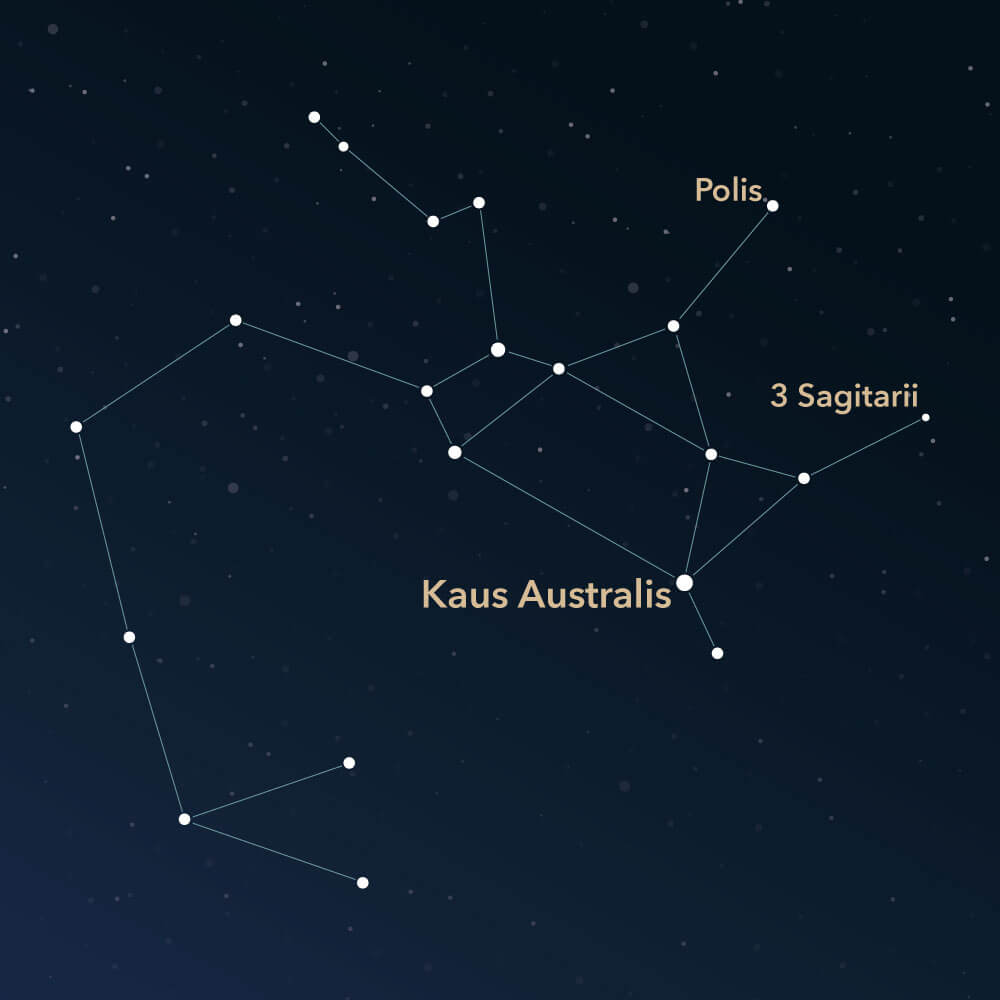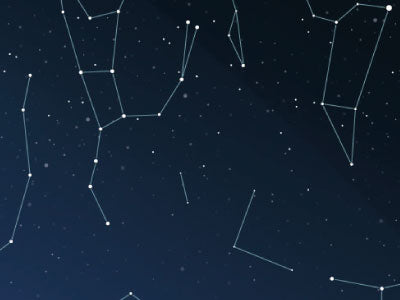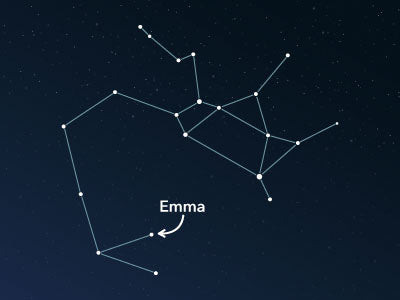The constellation Sagittarius
Characteristics
- Other names / Symbolism
- Archer
- Hemisphere
- Southern hemisphere
- Visibility
- June - August
- Area
- 867 deg²
- Brightest star
- Kaus Australis (HIP number 90185)
- Specialties
- Open star clusters, gas nebula, globular clusters, planetary nebulae, galaxies

Sagittarius, Latin for Archer, is associated with a centaur drawing a bow. It is an extensive zodiac constellation in the southern sky and was described in ancient times, with its origins dating back even further. There are a variety of exciting deep-sky objects located in its area. However, they are not visible to the naked eye.
Hemisphere, visibility, and area
The constellation Sagittarius lies in the southern celestial hemisphere and can be observed from the entire southern half of the globe. North of the equator, it is fully visible only up to the 45th parallel, so it can only be observed from regions south of locations such as Montreal in Canada, Portland in the United States, or Milan in Italy.
It is located on the ecliptic and is the southernmost of the 12 zodiac signs. Every year, between December 18th and January 20th, the sun passes through the constellation. During this period, the constellation cannot be observed as it rises and sets at the same time as the sun. To observe the constellation, the best time is between June and August.
The zodiac sign Sagittarius is associated with people born between November 23rd and December 21st. The astrological calculation is shifted by about one month from the actual path of the sun. This is because the precession of the earth's axis has caused the path of the sun to shift over millennia.
The constellation covers an area of around 867 square degrees, making it the 15th largest among all 88 constellations.
On star charts, Sagittarius is depicted by a variety of stars, with the brightest named Kaus Australis (Latin: ε Sagittarii, Epsilon Sagittarii). It is a double-star system with an apparent magnitude of roughly 1.8.
The constellation is surrounded by ten other constellations in the night sky. Along the ecliptic, it is bordered by Scorpius and Capricornus. Other neighbors include Aquila, Scutum, Serpens (Cauda), and Ophiuchus. Additionally, the constellations Corona Australis, Telescopium, and Microscopium are located nearby. The constellation Indus is situated southwest of it.
Specialties in the constellation
In the sky region of Sagittarius lies the richest part of the Milky Way. This produces a series of nebulous objects such as open star clusters, globular clusters, and gas nebulae. Planetary nebulae and a galaxy can also be observed with professional equipment. In the following, two objects are described in more detail.
The brightest gas nebula is M8 (Messier 8) or NGC 6523, also known as the Lagoon Nebula, with an apparent magnitude of approximately 6. It is a large star-forming region with a young open star cluster at its core, with dark clouds running through it. The Italian naturalist Giovanni Battista Hodierna discovered the object as early as 1654. It can be observed with binoculars in the middle of the two stars Polis (Latin: μ Sagittarii, Mu Sagitarii) and 3 Sagittarii.

The galaxy NGC 6822, also known as IC 4895, is an irregular dwarf galaxy. It is also known as Barnard's Galaxy. The object contains approximately 10 million stars and about 150 star-forming regions, which appear as red bubbles in astronomical images. Its distance from the Milky Way is estimated to be approximately 1.6 million light-years. The American astronomer Edward Emerson Barnard discovered the galaxy in August 1884. Although NGC 6822 is one of the brightest galaxies in the night sky, it is difficult to observe.

History and mythology
The Sagittarius constellation is one of the ancient constellations. However, the first mention of the constellation actually dates back to a tribe of nomadic horsemen and was later transmitted by the Sumerians.
The Babylonians also interpreted the stars and saw in them the deity Pabilsag, who had a lion's head and wings. On the other hand, for the Indians and ancient Egyptians, the constellation was an archer or rider.
There are various versions and depictions of the mythological origin of the constellation. Some identify Sagittarius with the centaur Chiron, who, as a skilled archer, shot an arrow at the Scorpion that attacked the hunter Orion. Others saw in it Krotos, the son of Pan and Eupheme. He was regarded as the inventor of archery and a great artist.
Overall, the interpretations are controversial, but the image of the centaur with a bow and arrow ultimately prevailed.
Constellation Visibility Tool
Los Angeles, USA
34.05°, -118.24°
Constellation Observing Guide
This guide shows when the constellation is visible above the horizon and provides the optimal viewing window when the sky is darkest. Times are displayed in the location's timezone (PDT).
🎯 Best Observing Window
Optimal time when the constellation is fully visible AND the sky is at its darkest. Perfect for telescopic observations, astrophotography, and viewing faint details.
Optimal start
21:25
Jul 7, 21:25
Optimal end
04:23
Jul 8, 04:23
Duration
6.98h
Prime observing time
✨ Perfect Observing Conditions
This is the overlap when the constellation is above horizon AND the sky is at its darkest. Ideal for telescopic observations and photography.
Constellation Visibility from Your Location
8
Visible Stars
0
Never Rise
0
Always Up
100%
Visible
All stars of this constellation can be observed from your location
Constellation Visibility
When the constellation is above the horizon (includes daylight hours)
Rises
19:25
Jul 7
Fully Up
20:19 – 04:23
Jul 7
Starts Setting
04:23
Jul 8
Fully Set
05:35
Jul 8
Above Horizon Times
Includes daylight hours when stars aren't visible to naked eye.
Astronomical Night
When the sky is darkest (sun >18° below horizon)
Dark sky begins
21:25
Jul 7
Dark sky ends
04:45
Jul 8
Darkest Sky Period
Sun more than 18° below horizon. Best for faint objects.
Observing Tips
Read more interesting articles

An overview of all 88 constellations
Learn more about all 88 constellations and read interesting information about the mythology, visibility, and features.

Planetarium App
Discover the night sky with our planetarium app!
Available for iOS and Android.

Name a star in the constellation Sagittarius
Name a star in a constellation and create something that lasts for eternity.